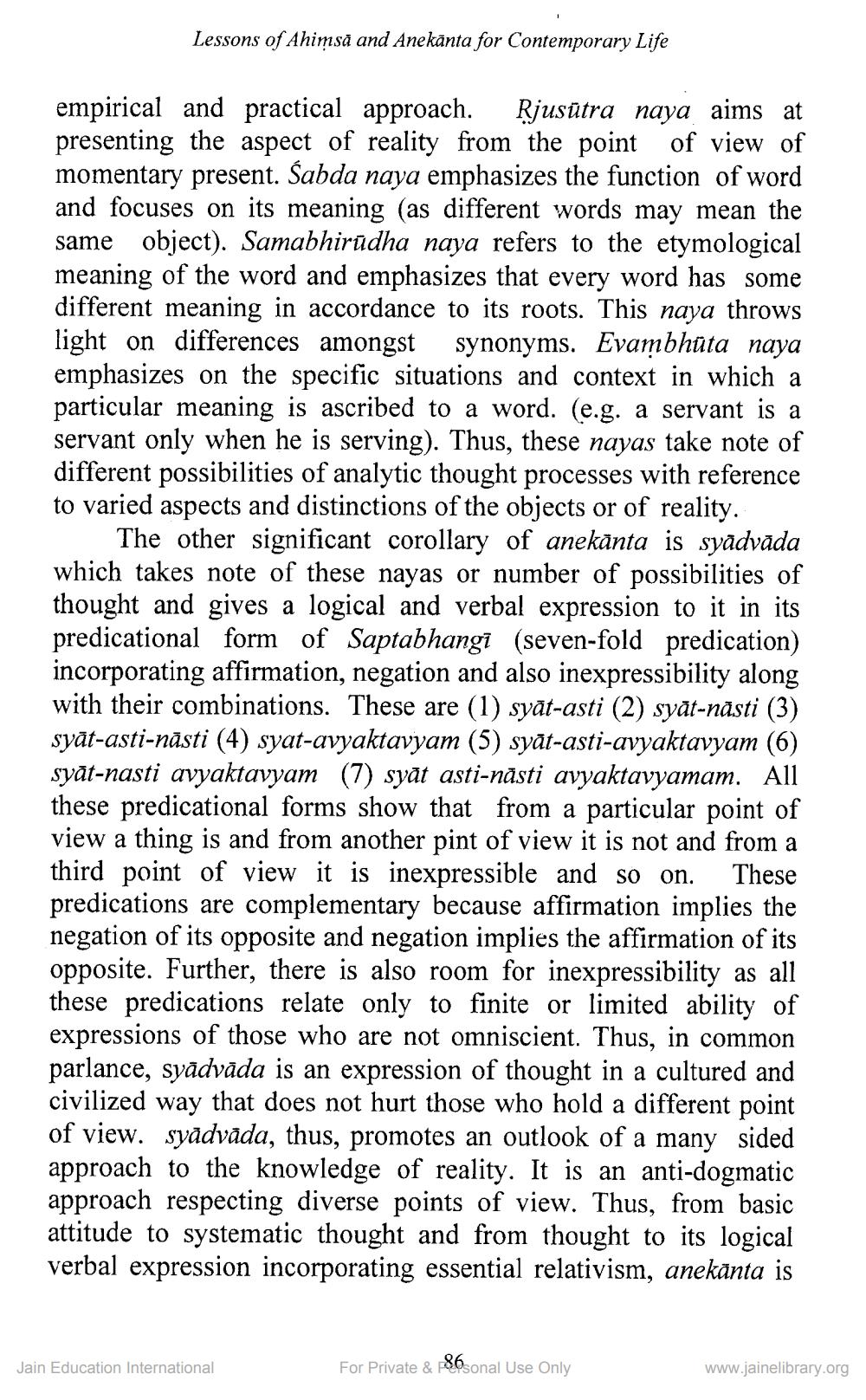________________
Lessons of Ahimsă and Anekānta for Contemporary Life
empirical and practical approach. Rjusutra naya aims at presenting the aspect of reality from the point of view of momentary present. Sabda naya emphasizes the function of word and focuses on its meaning (as different words may mean the same object). Samabhirūdha naya refers to the etymological meaning of the word and emphasizes that every word has some different meaning in accordance to its roots. This naya throws light on differences amongst synonyms. Evambhūta naya emphasizes on the specific situations and context in which a particular meaning is ascribed to a word. (e.g. a servant is a servant only when he is serving). Thus, these nayas take note of different possibilities of analytic thought processes with reference to varied aspects and distinctions of the objects or of reality.
The other significant corollary of anekānta is syadvada which takes note of these nayas or number of possibilities of thought and gives a logical and verbal expression to it in its predicational form of Saptabhangi (seven-fold predication) incorporating affirmation, negation and also inexpressibility along with their combinations. These are (1) syāt-asti (2) syāt-nästi (3) syāt-asti-nāsti (4) syat-avyaktavyam (5) syāt-asti-avyaktavyam (6) syāt-nasti avyaktavyam (7) syāt asti-năsti avyaktavyamam. All these predicational forms show that from a particular point of view a thing is and from another pint of view it is not and from a third point of view it is inexpressible and so on. These predications are complementary because affirmation implies the negation of its opposite and negation implies the affirmation of its opposite. Further, there is also room for inexpressibility as all these predications relate only to finite or limited ability of expressions of those who are not omniscient. Thus, in common parlance, syadvāda is an expression of thought in a cultured and civilized way that does not hurt those who hold a different point of view. syādvāda, thus, promotes an outlook of a many sided approach to the knowledge of reality. It is an anti-dogmatic approach respecting diverse points of view. Thus, from basic attitude to systematic thought and from thought to its logical verbal expression incorporating essential relativism, anekānta is
Jain Education International
For Private & 86sonal Use Only
www.jainelibrary.org




